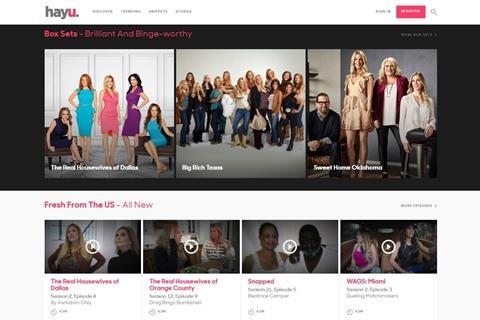Launching an OTT service used to be a complicated technology project. Now, the challenges relate to understanding and communicating with audiences, writes Bill Scott.

As we approach IBC2017, the industry is at a tipping point; affordable technology solutions are available to enable anyone with content to launch a direct-to-consumer service, OTT.
The challenge now is more about whether you understand your target audience segment well enough to create an attractive and relevant proposition and whether you can then market that proposition effectively.
Not so long ago, the launch of an OTT service would necessarily be a complex systems integration and application development project on top of the content, marketing, commercial and legal aspects.
IBC2017 Understanding audiences is one of the topics that will be explored in the Platform Futures stream running on Thursday 14 and Friday 15 September
You might work with many different partners to assemble your solution and you might outsource that assembly to a systems integrator.
You might require project managers to manage it all, designers to design it, developers to develop apps and websites, a test team to test it all and an operational team to keep it running.
You might need a home for your content and metadata, one or more Content Delivery Networks to ensure streaming quality, a CRM system to manage your customers, a DRM to encrypt your content and third-party payment services to take the money.
This might have taken months to implement and would have cost a lot.
Nowadays, it is possible to buy an off-the-shelf service which can be easily customised and provide an end-to-end capability from cloud-based providers.
These services can be implemented in weeks without any complex systems integration and at a much lower cost.

This growing maturity of software solutions has transformed the landscape of OTT; enabling content owners and aggregators to build a business case to earn a return on investment faster and with lower customer or transaction numbers than was possible before.
This is a tipping point in the broadcast industry as it enables more competition from both new and traditional players, allowing those players to enter the market faster and to experiment with different offerings.
It enables experimentation with different brands and with different marketing approaches. It makes direct-to-consumer services affordable.
Technology now enables the industry to focus time, effort and resources (both physical and financial) on creating a relevant content proposition for an audience segment and on marketing that proposition to that audience.
Technology enables the collection of data to provide insight into the audience response. The creation of new direct-to-consumer offerings is now a business challenge more than a technology challenge. It is this business challenge that we focus on within the Platform Futures stream at IBC.
Skills: Transformation or acquisition

Whilst some of the skills required to develop and market direct-to-consumer channels are similar to that of traditional broadcast channels, some are very different.
As ever, you must understand an audience segment and you must create a relevant content mix for that audience segment; not much difference there.
You also need to schedule the release of new content; again, pretty similar to the old way. You don’t have a 24/7 schedule to fill, but you do want to time the release of new content and run marketing campaigns to maximise the value of that content’s pull to your audience.
Where it starts to get interesting is when you think of your audience as customers.
This is not a subtle distinction.
Broadcasters have always had an audience, but (unless they happen to also be a pay TV platform) they have typically not had customers.
The TV operators have the customers, the broadcasters have the audience. Now, by going direct-to-consumer, the broadcasters finally have customers and crucially the data that they generate.
This is a very different world, and different skills are required.
Of course, broadcasters have been investing in digital and online services for years, and in many cases have developed an online offering with its own presence and even unique content.
Some – BBC, this is you – have even created new brands. This “Digital” world requires internet marketing skills, the use of social media and CRM. Do you just roll those digital skills into the mainstream business?
Or does OTT’s transformational impact on the existing business mean that the required skills are different again?
Does a Direct-to-Consumer service need more than the sum of its traditional and digital parts in order to succeed now that the technology is an enabler rather than a barrier?
What existing skills can be developed and transformed to suit this new world? What new skills do you need to acquire?
Marketing a direct-to-consumer service is a very different challenge to that of a traditional broadcast channel, even one with a mature digital component.
At this point it is important to distinguish between a digital service complementing a broadcast channel and a complete direct-to-consumer channel, where all viewers in the audience are customers.
A complementary digital service can help to inform the understanding of the audience as a whole, but is it truly representative? Surely this can only ever give you part of the picture? If the audience is your customer base and vice versa, you can get a complete view of how your audience responds to a marketing campaign, how it discovers and enjoys a programme and how it then comes back for more, or not.
Services such as hayu, from NBCUniversal and Netflix are direct-to-consumer services built from the ground up, and their audiences are all customers.
IBC2017 Direct to Consumer: The next generation TV channel may not be broadcast - NBCU’s Hendrik McDermott in conversation with Bill Scott
This enables sophisticated data collection and analysis and real-time feedback on success or failure. Good management information informs digital marketing decisions as well as more traditional marketing spend.
My theory is that the proportion of digital marketing spend relative to traditional marketing increases in proportion to the understanding of the audience.
As data analysis becomes more sophisticated, marketing spend will become more digital and therefore more measurable. And this is an indicator of an advanced stage of transformation of the industry.
The tipping point has been reached.
Bill Scott is the COO and co-founder of multi-screen video software company Easel TV and the IBC Conference Executive Producer of the Platform Futures stream.
Tweet Bill: @BillJScott



























No comments yet